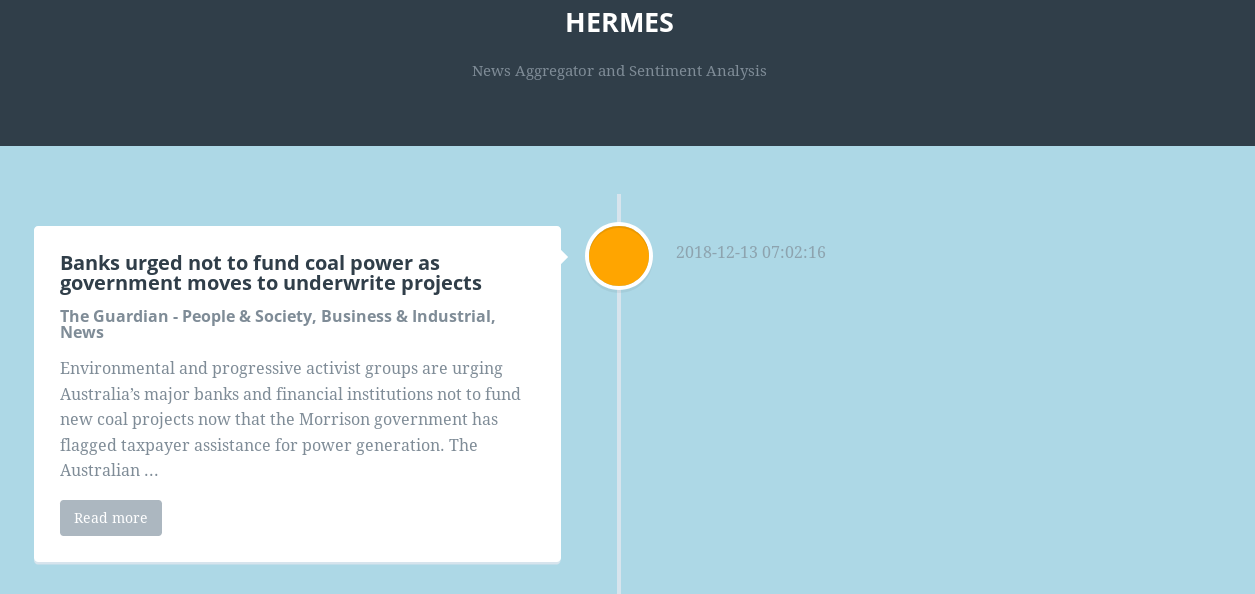Hermes

In times of ever increasing news saturation it can be hard to follow certain developments, e.g. debates on environmental policies, activism, and the like. Hermes tries to work on that issue, by providing aggregated news from different sources using their APIs, and displaying the content in chronological order. To get a reasonable first impression of the article/post tags, categories and/or the overall sentiment are shown. The whole news body with it’s analysis is stored for later reference and/or further going projects.
Hermes is a proof-of-concept, showing news aggregation, processing and analysis, and ultimately illustrating tailored content in a compact form.
The conceptual workflow for Hermes is as follows:

Some media API provides raw content, which is preprocessed and analysed using Natural Language. It is stored in a Firebase Realtime Database for easier duplicate checking as well as providing the content for the actual website. For archiving purposes, the RTDB content is automatically proxied into BigQuery using a cloud function, which listens to changes in Firebase.
The innovative part lies in machine learning and its application to analyse the sentiment and category of some content. While the temporal restriction of one month work didn’t let us train our own model, we defaulted to Google’s Natural Language API. Nevertheless, a specifically trained model would be better tailored for our approach.
Hermes could potentially be used by GP to provide an aggregated feed of world news and/or social media activity to keep up to date with current environmental affairs or to provide a red thread in temporal order depicting the progress of different campaigns.
This could also help communicating and conveying GP’s work to the public to lift the curse of partial media coverage or misrepresented goals and actions, as well as exposing more of the political work GP does, which - sadly - doesn’t get as much attention as it could.
Find the code on our github repository.